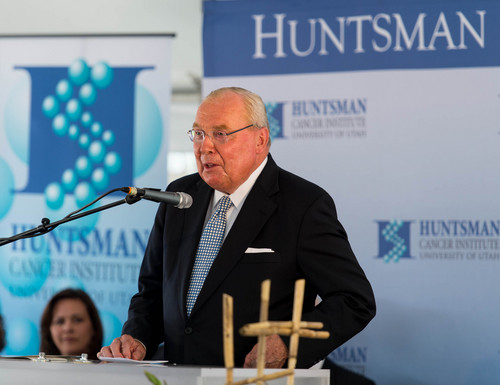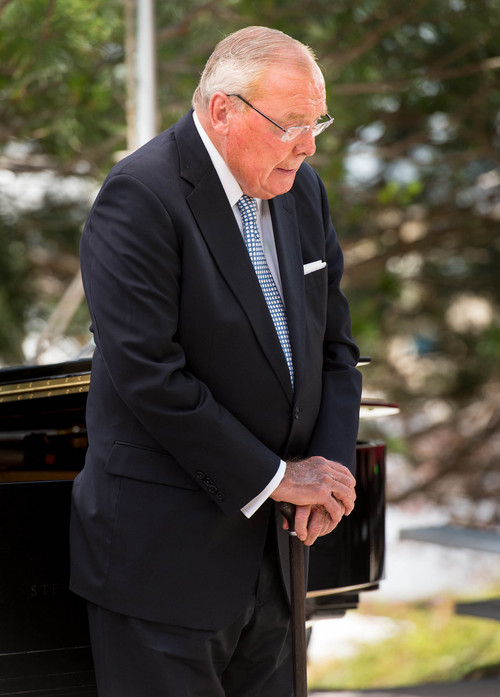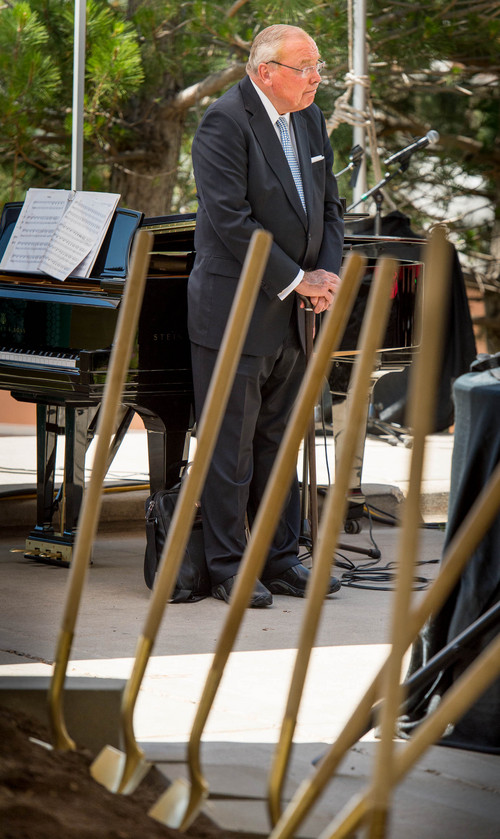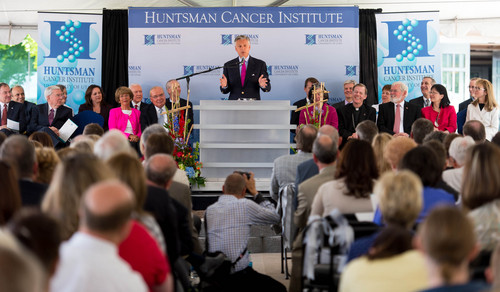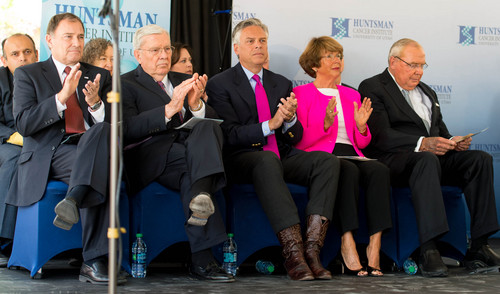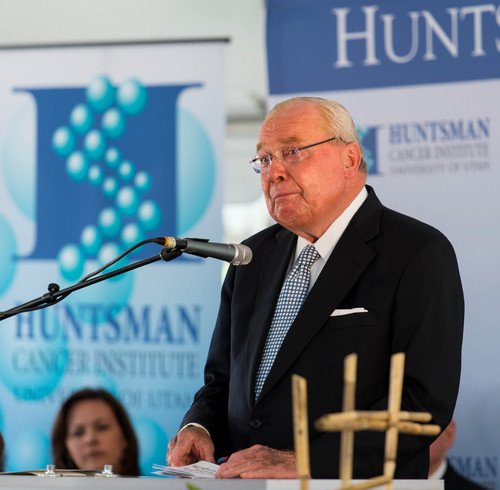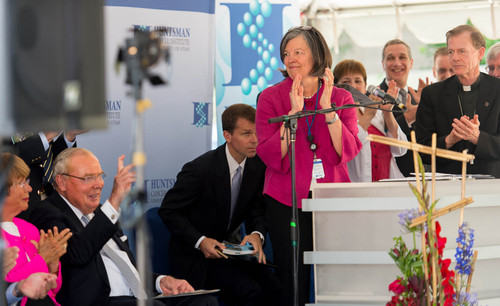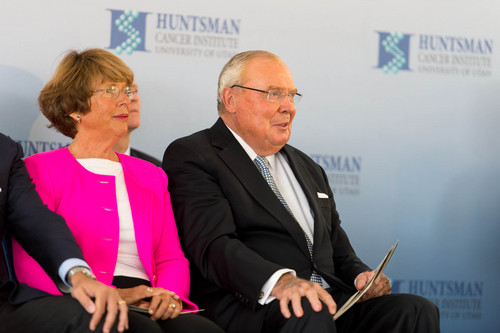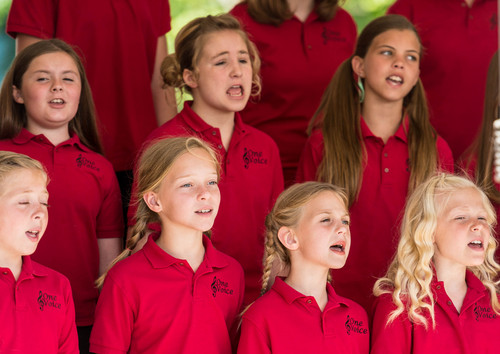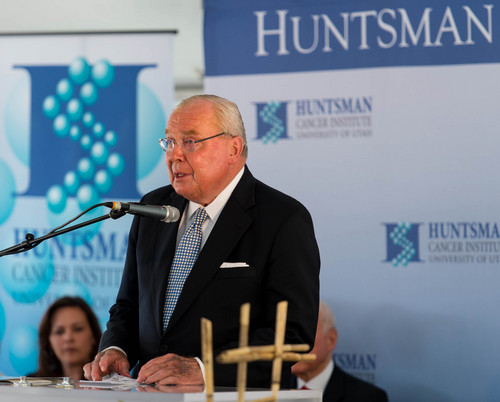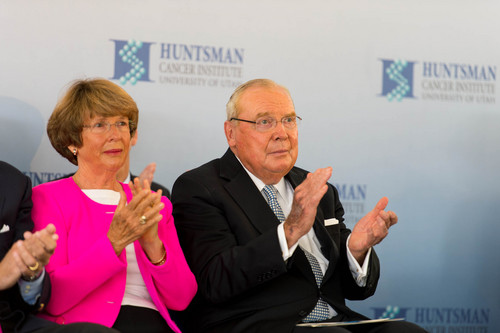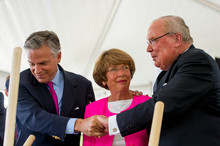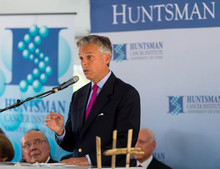This is an archived article that was published on sltrib.com in 2014, and information in the article may be outdated. It is provided only for personal research purposes and may not be reprinted.
University of Utah's Huntsman Cancer Institute has begun construction on a $105 million research wing dedicated to the study of childhood and family cancers –– an investment coinciding with deep cuts in federal research funding and growing concerns about the cost of cancer care.
But within minutes of breaking ground for the project on Friday, Industrialist Jon Huntsman, Sr., who founded the institute in 1995, was talking excitedly about the next expansion.
"You'll see in a few months, I'm not supposed to say anything. ... But I've already got the next phase ready to go," Huntsman told reporters. "This is the time, the season and the place to cure cancer."
The latest, 220,000-square-foot addition doubles the institute's research space, allowing it to broaden the search for genetically-targeted therapies for inherited cancers. It is not a treatment facility.
It will be named the Primary Children's and Families' Cancer Research Center, reflecting the focus of one of the project's principle donors, The Church of Jesus Christ of Latter-day Saints.
"We have a lot of work that we can't currently do because we don't have the space to hire talented specialists," said the hospital's CEO, Mary Beckerle. "It will expand our capacity to do high-impact, investigator-initiated trials that have come from our own scientific discoveries. It will expand the translation of our own science."
Huntsman already leads the world in the discovery of inherited cancer-causing genes, Beckerle said.
The hospital is the site of the Utah cancer registry and the Utah Population Database, which allows researchers to link genealogies with medical records. "It's the largest population database for medical research in the world and has been used by investigators here to find genes for breast, colon, melanoma and many other cancers," Beckerle said.
Combining that with new DNA-sequencing technologies and the work of the U.'s molecular geneticists, such as Nobel Prize winner Mario Capecchi, will give Huntsman an edge in discovering cancer-causing mutations and in finding treatments to target them, she added.
"Once you identify a mutation you need to understand how it works or what the disease does," she said. "We've developed some really robust mouse models [for testing] novel therapies or chemo strategies to better treat cancer in a targeted way."
Consuming the once-barren hillside above the U., the cancer institute, is "a fulfillment in the ethos that still lives on in the West, that you can dream big and build big," said Huntsman's son and namesake, Jon Huntsman, former Utah governor and presidential candidate.
The U.S. is a world leader in health innovation, and the Huntsman Cancer Institute will give Utah an economic edge, Huntsman believes. "Therapies, cures and diagnostics will be developed by basic researchers and taken out into the marketplace, and you'll have new companies that are spun off and hiring the next generation of workers."
But for his father, the quest is personal. A four-time cancer survivor, he has lost multiple family members to the disease.
Years before the institute was built, Huntsman Sr. said he befriended an 8-year-old girl with cancer at a fundraiser for Primary Children's Hospital.
He asked the girl what she'd want if she could have one wish granted, and she told him she wanted to go to Disney World. He made it happen, accompanying her and her family on the trip, and years later, when he was in the hospital with cancer, she came to visit him.
"She brought me great inspiration," he said at Friday's event, his voice cracking with emotion. "A few years later she passed away from cancer. I think I see her in the back of this gathering saying, 'Right on, keep going. We need you.'"
Twitter: @KStewart4Trib —
Hope through research
Huntsman Cancer Institute is located on the campus of the University of Utah. A new child and family research wing will extend from the southeast corner of the research arm of the original building and marks the fourth major construction phase.
The first phase, The Jon M. Huntsman Research Center, was completed in 1999.
Half of the funding for the new research wing was provided by Huntsman. The rest is coming from individual donors and large contributors, such as the LDS Church, Intermountain Healthcare and the family foundation of former U. basketball coach Rick Majerus.
The Legislature invested millions and Salt Lake County approved the issuance of a bond, allowing construction to start right away.


